Albuquerque Personal Injury Lawyer
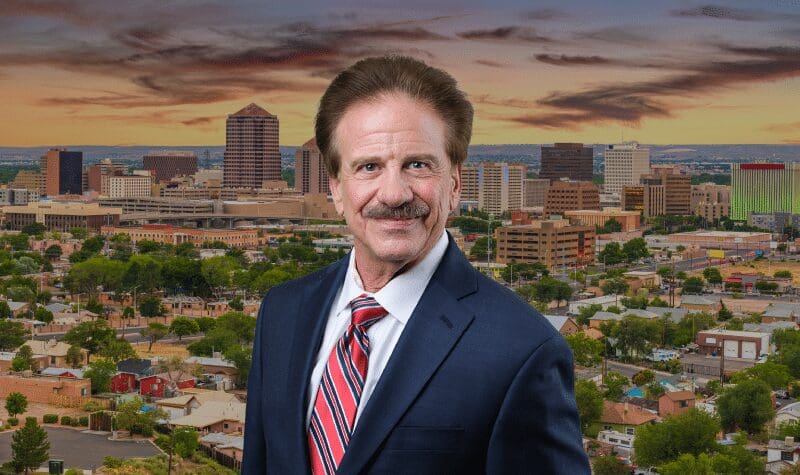
If you or someone you care about has suffered an injury due to someone else’s negligence, a personal injury attorney in Albuquerque from Ron Bell Injury Lawyers can help. Our skilled attorneys have helped countless injury victims recover full and fair compensations following a personal injury or wrongful death, and we are here to hold the negligent parties responsible. Whether you were injured in a car accident or other motor vehicle accident, a slip and fall, or a more complex legal matter, such as medical malpractice, our experienced team is here to provide the legal guidance and support you need.
We offer free case reviews and handle personal injury cases on a contingency basis. This means we don’t get paid if we don’t recover your compensation. You never pay out of pocket – ever.
Call us today at 505-898-2355 to discuss your case with a member of our team.
With more than 35 years of experience, we can make a difference
For more than three decades, our Albuquerque personal injury lawyers have advocated for the rights of injured victims like yourself. We know the stress an injury can put on your daily life, and we’re here to help guide you through the legal issues so you can focus on recovery.
Acting with reasonable care is everyone’s responsibility to avoid causing harm or catastrophic injuries. If you’ve been a victim of someone’s carelessness or disregard for the law, you need an attorney who will fight to ensure you recover every dollar you deserve.
RING THE BELL today and put our experience to work for you
What does a personal injury lawyer do?
A personal injury lawyer handles every aspect of personal injury claims and lawsuits, and these services can vary depending on the specific needs of your case. Your attorney will handle the entire process to gather documentation, including police or accident reports, retain evidence, interview witnesses, conduct investigations, negotiate with the insurance company on your behalf, and, if necessary, litigate your case in court to demand maximum compensation for your damages. The primary purpose of a personal injury lawyer is to work in your best interests so that you can be confident that all legal options have been addressed.
Client Review
Kirsten K. – 5-star review
“I just want to start out by saying nobody ever wants to be in an accident! But if it happens, then you need a law firm like Ron Bell! I say that because they are actually there for you. They come to you in the comfort of your own home, help you with all your paperwork and answer any questions that you may have. I definitely feel comfortable and that somebody actually has my back. Thank you!!”

Do I need an Albuquerque, New Mexico, personal injury lawyer?
Understanding what a personal injury lawyer does is essential, and understanding if you need the services of a lawyer after an injury is equally important. The most helpful advice we can offer if you’re asking yourself this question is to call us so that we can discuss your specific situation. Hiring an Albuquerque injury lawyer will be essential to receiving fair compensation from the at-fault party and the insurance companies. In fact, a recent study by The Insurance Research Council has even shown that people represented by a personal injury lawyer receive three and a half times more money than those without an attorney.
When to get a personal injury lawyer
When you’ve been injured, in some cases, you may not immediately know the extent of your injuries or how long they will last. Knowing when to hire personal injury lawyers can often mean the difference between being compensated fairly for damages you may suffer short-term and long-term, receiving less than you deserve, or not being compensated at all. Contacting an experienced personal injury attorney as soon as possible can only benefit you and your case, particularly if you have severe injuries.
This is especially important when time limits, or statute of limitations, are considered.
The New Mexico statute of limitations states that you have up to three years to file an Albuquerque personal injury claim, and in most cases, the clock starts ticking on the day the injury occurred. Three years sounds like a long time, but in personal injury cases, the longer you wait to file your case, the more difficult proving your claim becomes. Additionally, if you miss this deadline, you can be barred from seeking any compensation at all. Experienced personal injury attorneys can help you understand the statute for your injuries to ensure you remain eligible to collect economic, non-economic, and, in some cases, excess damages from the responsible party.
Recoverable damages in Albuquerque personal injury cases
Depending on your injury, or in the the case of wrongful death, our clients may be able to recover money for damages such as medical bills, lost wages, pain and suffering, and other losses. While every personal injury case is different, we can help you understand the types of damages you may be entitled to, including:
Economic damages
Economic damages are financial losses. Some are fairly obvious, such as medical bills. In contrast, others can require an Albuquerque personal injury lawyer to determine a fair settlement amount, such as future lost wages or ongoing medical expenses. Economic damages may include:
- Medical bills and medical expenses
- Lost wages and future lost wages
- Reduced earning capacity
- Prescription drug and pain management costs
- Home modifications to accommodate a disability
- Rehabilitation and other therapies
- Ongoing and future care costs
- Property damage
- Loss of household services
- Other out-of-pocket costs
Non-economic damages
Non-economic damages are subjective and are losses that are not financial in nature. While you may be able to clearly show economic and financial losses, personal injury lawyers know what is needed to recover damages that are not as straightforward. These include:
- Pain and suffering
- Emotional distress
- Loss of enjoyment of life
- Loss of consortium
- Scarring and disfigurement
Punitive damages
Punitive damages are awarded at the court’s discretion to punish the liable party further and are intended to discourage the defendant from repeating harmful activity in the future. For punitive damages to be awarded, it must be proven that the defendant acted intentionally, maliciously, or particularly recklessly. For example, punitive damages may be awarded in a car accident case if the defendant was driving drunk or engaged in road rage.

How much is my case worth?
This is a common question; however, it is a complex one to answer. The most important thing to understand when it comes to how much your claim is worth is that the value of your claim can change throughout your case. Moreover, some injuries can take weeks or months to show up or materialize. Experienced Albuquerque personal injury lawyers will ensure that you pursue treatment to determine if your injuries can be resolved or if they will be permanent. Your settlement amount will vary based on the outcome of your treatment and the diagnosis of your doctors, among other factors.
The best way to find out how much your case is worth is to speak with our team. Call us today for a free consultation.
505-898-BELL
How a personal injury lawyer at Ron Bell Injury Lawyers can help
Hiring a personal injury attorney from our firm can help you in a number of ways so that you can focus on your recovery. We provide a wide range of services for personal injury claims, which include:
- A highly skilled team to answer any questions you have throughout the duration of your case
- Dedicated attorneys who will deal with the insurance company and navigate all of the insurance coverage, benefits, and conversations with your claims adjustor
- Gathering medical records, police reports, and other documentation to use as evidence of negligence during negotiations with the insurance company
- Conducting accident investigation and reconstruction to prove fault and percentage of fault
- Ensuring that all legal deadlines are adhered to so that your personal injury case can keep moving forward in a timely manner
- Conducting eye witness interviews to document their account of the accident and obtain expert witnesses when needed to testify on your behalf
- Damage analysis and evaluation to determine how much your case is worth to maximize your compensation
- Insurance settlement negotiations
- Trial or court litigation
Types of Albuquerque personal injury cases we handle
Our personal injury attorneys speak with clients every day to resolve legal issues surrounding various case types, including, but not limited to:
Car accidents
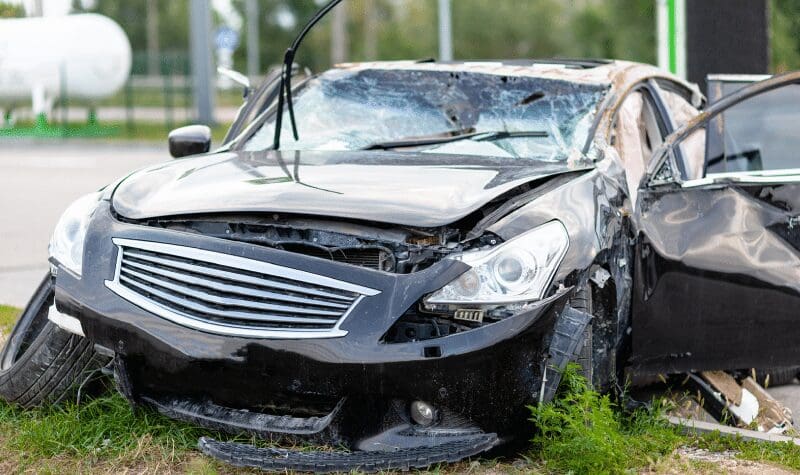
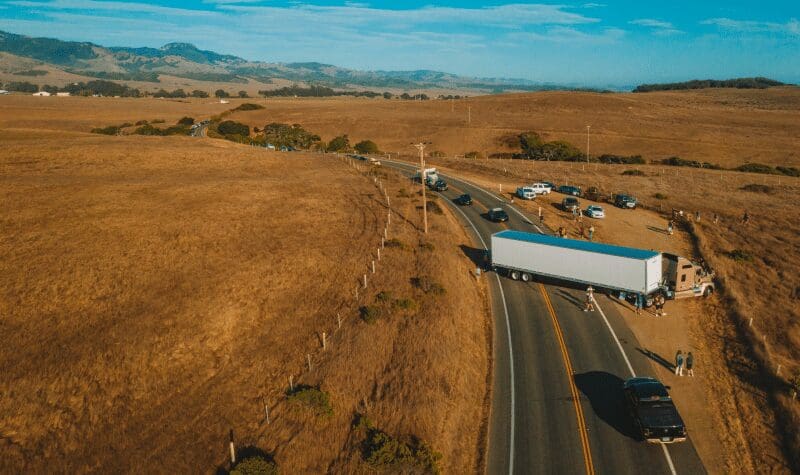
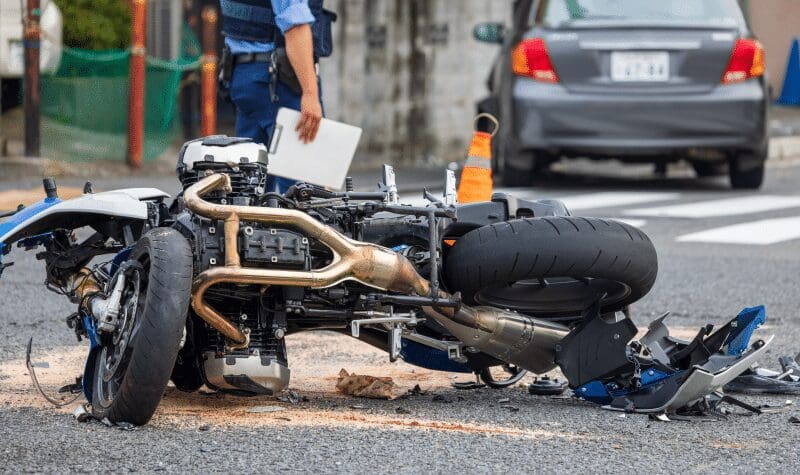




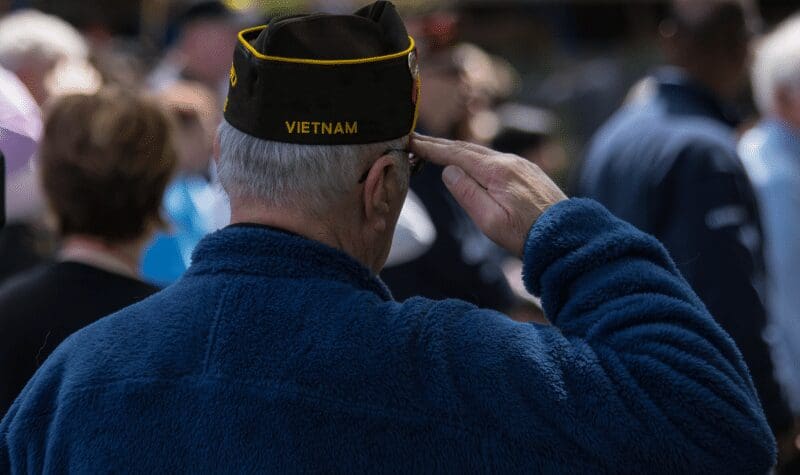
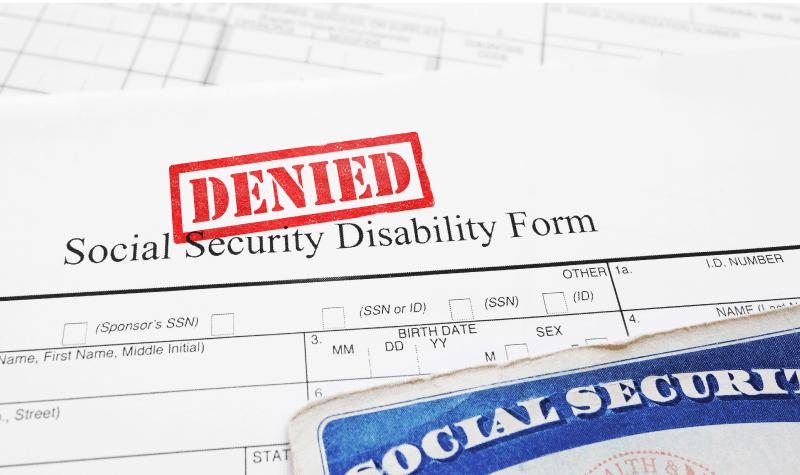
Common injuries that require personal injury lawyers in Albuquerque
Clients often come to us with various serious injuries due to someone else’s negligence. Some of the most common injuries we see are:
- Whiplash from either a car accident or a fall
- Lacerations
- Broken bones
- Soft tissue injuries
- Traumatic Brain Injuries (TBI)
- Spinal injuries
- Psychological trauma
How to choose the best personal injury attorney for you
When seeking legal help, there are some important things that you should consider when deciding who will be the right lawyer for you. Some questions you should ask include:
Does the firm have experience with your type of case?
Hiring a lawyer with years of experience navigating your specific case type is critical. An attorney versed in your area of need will know exactly what to do at each stage of the process to ensure you receive the most money possible.
Do they have a history of successful results that they can prove?
An injury law firm should be able to provide you with examples of success. Although each case is different, this will give you confidence that they have experience successfully helping clients similar to you.
Are they local to Albuquerque, NM?
Hiring a local firm can be beneficial in several ways. For one, you can visit a physical office if you choose to meet with your team face-to-face. A local firm can also go out and speak directly with witnesses and visit the scene of the accident to gather additional evidence. While a personal injury lawyer not in Albuquerque may be able to speak with you about your claim, hiring a local personal injury lawyer can help you because they will know the local laws and be licensed to represent you.
Call us today to speak with a member of our team. We can help and have the experience to prove it.
505-898-2355
Read our client reviews and testimonials
Michael R. – 5-star review
“The most pleasant people to deal with. Always informed and on top of everything every step of the way. A very pleasant experience. Highly recommend them.”
Lucinda G. – 5-star review
“Ron Bell Injury Lawyers have helped me numerous times with legal help and have done nothing but excellent work each time. I was very pleased with their services. The attorneys and staff listen to you and are there for you. Even if it’s not related to your case, they go out to see how you are doing. I appreciate their time, work, and their efforts in making sure that my voice is heard. Thank you for all you helped me with.”
Jessica H. – 5-star review
“I was in a car accident four years ago, and Ron Bell’s firm helped me with all the details involved. I now have had another car accident four years later, and their service is still the same great service! Everyone I’ve spoken with has been great! I definitely recommend using their firm for personal injury.”
Read more about how we’ve helped our clients.
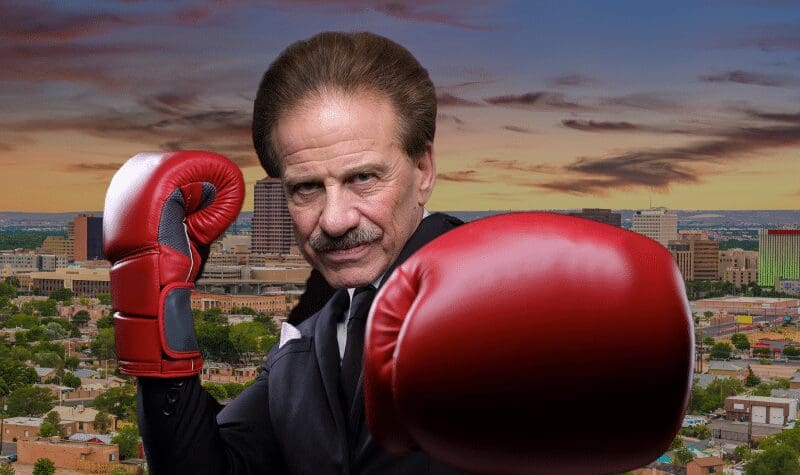
Talk to an Albuquerque Personal Injury Attorney About Your Case
If you suffered injuries because of someone else’s careless or negligent actions in Albuquerque, it is time to get serious. The Ron Bell Injury Lawyers personal injury team offers free case reviews and will fight for the compensation you deserve.
Call us today at 505-898-2355 for a free consultation. Ring the Bell.
Frequently asked questions and helpful tips.
What is pure comparative negligence in Albuquerque, NM?
Negligence is the failure to act reasonably under the circumstances. New Mexico law has established a pure comparative negligence approach when determining what a person may be entitled to in a personal injury claim. This means that the plaintiff party can recover compensation in a personal injury lawsuit to the percentage that the other person was at fault. For example, if you’ve been injured and have $10,000 in damages, and the other person is 90% responsible, you would be able to collect $9,000.
This also means that you could be 99% at fault and technically still recover compensation in New Mexico.
What should you do after suffering a personal injury, and what are the stages of a personal injury claim?
- Seeking medical attention to document your injuries and receiving the care you need
- Reviewing your personal injury claim with an experienced attorney
- Issuing a demand letter and beginning negotiations, resulting in a settlement or a determination that litigation is required to resolve the matter
How Do You Prove Negligence?
During an Albuquerque personal injury lawsuit, the injured victim must prove that the other person or party was negligent or acted without reasonable care. A personal injury attorney will know the best way to prove negligence and produce this evidence during negotiations with the insurance company or in front of a judge and jury during a trial. In a personal injury case, four primary elements need to be proven:
- Duty of care owed. Duty of care is “the degree of caution and concern for the safety of the self and others an ordinarily prudent and rational person would use in the same circumstances.” The person or parties responsible for your injuries owed you the duty of exercising reasonable care.
- Duty of care breached. In other words, the defendant acted recklessly or carelessly beyond what a reasonable person would do in that situation.
- Causation established. This is a matter of cause and effect – the carelessness or recklessness of the defendant caused your injuries.
- Damages suffered. Your accident lawyer will need to prove that you suffered damages as a result of the actions (or inactions) of the defendant. These damages can include medical expenses or others mentioned above.
How much is the fee for an injury lawyer?
Our firm works under what is called a contingency fee. This means that we only get paid if we receive compensation for you. The primary benefit of a contingency fee is that you never have to pay out of pocket. Our fee is deducted from the settlement or verdict amount. If we don’t recover, you don’t pay.
Will my case settle or go to court?
Our attorneys treat every case as if it will go to court; however, most cases, such as car accidents, will settle during negotiations. When you build a strong case from day one, insurance companies are less likely to want to go to trial. This is another important reason to contact a personal injury lawyer immediately.
Albuquerque and New Mexico personal injury statistics and studies
In 2003, New Mexico’s most distinguished personal injury experts set out to answer a couple of very challenging questions:
What factors cause personal injuries in New Mexico, and how can injuries be prevented?
Traditionally, injuries had been presented in New Mexico injury reports as random things that “just happen.” Someone runs a red light and causes a wreck, someone falls in Walmart, causing a brain injury, a medical device is defective and causes a serious injury – and the list goes on – one cause and one effect. In other words, injury victims and various injuries were viewed superficially; however, in 2003, New Mexico took on a new, scientific approach to better understand patterns, causes, and risk factors that impact New Mexico residents regarding personal injury. The output of this study was named the New Mexico Injury Prevention Strategic Plan.
In 2014, the study was updated by every injury-related authoritative body in New Mexico, including New Mexicans working in injury prevention, the Office of Injury Prevention, Injury and Behavioral Epidemiology Bureau, and the Epidemiology and Response Division. This update set out to identify all the various elements that may play a factor in an injury. Some of these factors included:
- The effect injury has on subpopulations in the state, such as different age groups, genders, and races/ethnicities, including American Indians/ Alaska Natives and Hispanics.
Along with a host of other factors, including:
- Income level, generational status, environmental conditions, geographic location, unique histories with health systems and government policies, occupational conditions, language barriers, discrimination, and inadequate access to treatment and medical services characterize these populations’ lives and contribute to the types and extent of injury disparities.
For example, poverty puts individuals at elevated risk of injury.
The Burden of Injury in New Mexico
This study uncovered some unfortunate truths about New Mexico surrounding personal injuries, including:
- Injury is the leading cause of premature death in New Mexico.
- New Mexicans, ages 1-44 years, are more likely to die from an injury than from any other cause.
- Of all the deaths due to injury in New Mexico, about two-thirds are from unintentional or “accidental” causes – primarily car crashes and falls.
- Car accidents were the second-leading cause of injury death in 2014.
- For residents aged 65 and older, falls were the leading cause of injury death, as falls accounted for 67% of all unintentional injury deaths in that age group. This is especially seen in the form of nursing home abuse or neglect.
- Other leading unintentional or “accidental” injuries that claim the lives of Albuquerque and New Mexico residents and leave others disabled are suffocation, drowning, and fire or burns.
Unintentional injuries continue to be a leading cause of death in New Mexico.
According to the New Mexico Department of Health report, in 2020, unintentional injuries were the fourth most significant cause of death in New Mexico.
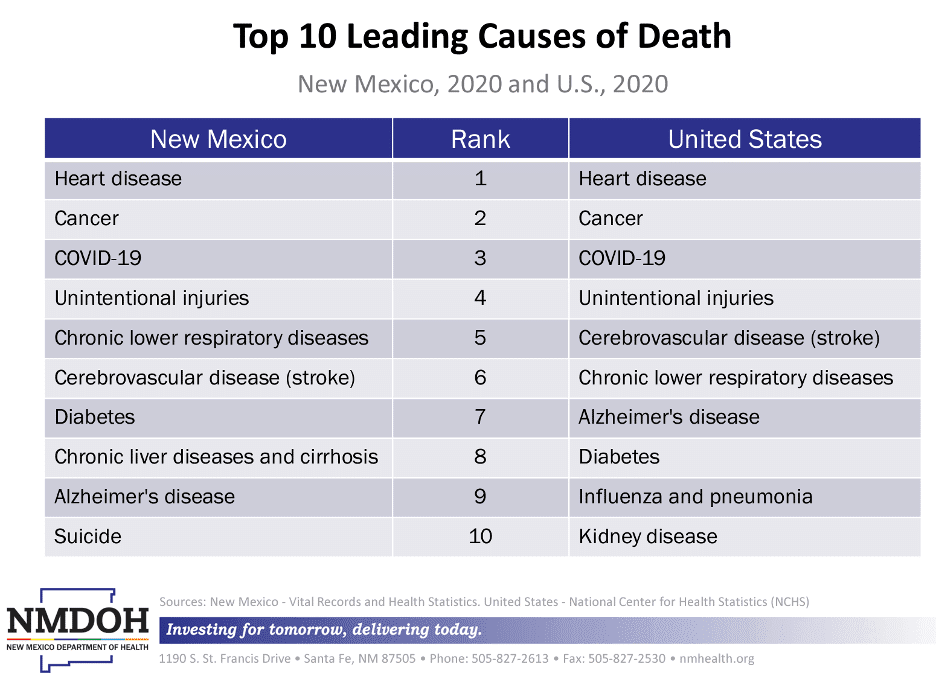
This report was also broken up by regions of the state and respective counties, which include Northwest (San Juan, McKinley, Cibola), Northeast (Santa Fe, Rio Arriba, Los Alamos, Taos, Colfax, Union, Harding, San Miguel, Guadalupe, Mora), Metro (Torrance, Bernalillo, Valencia, Sandoval), Southeast (Lincoln, De Baca, Quay, Curry, Roosevelt, Lea, Eddy, Chaves), and Southwest (Socorro, Catron, Grant, Sierra, Hidalgo, Luna, Doña Ana, Otero).
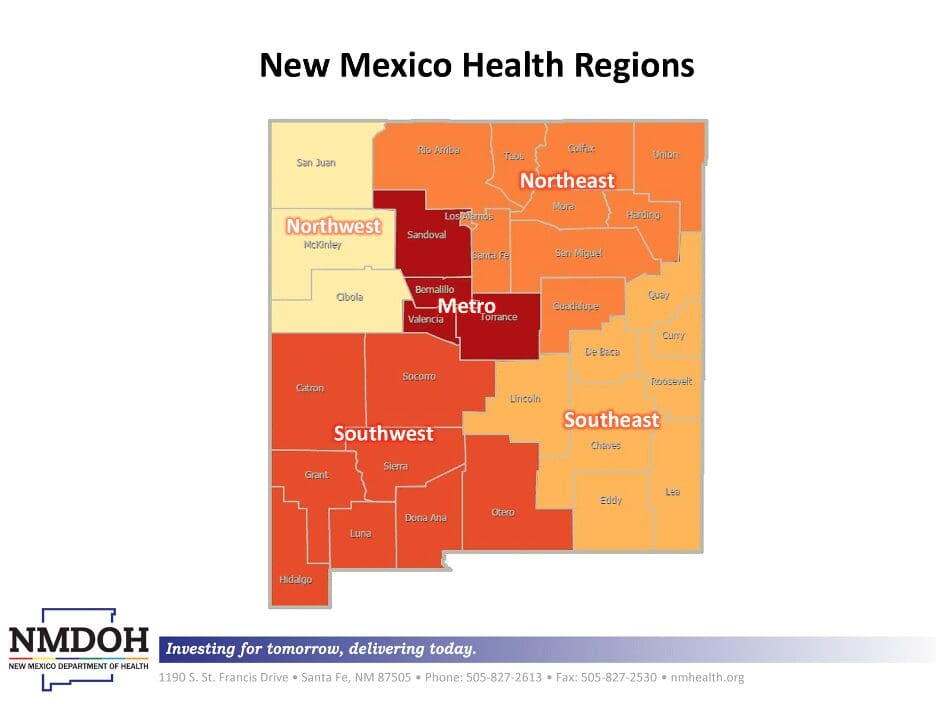
According to this report, the state’s northwest region sees the highest unintentional injury death rates in New Mexico, followed by the northeast and then by the metro, which includes Albuquerque.
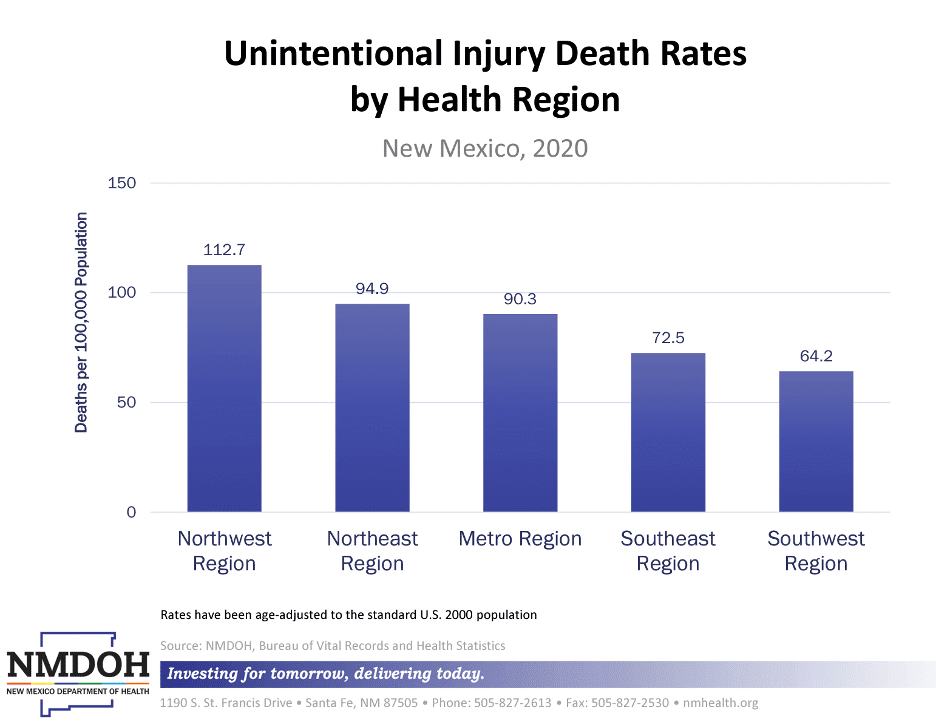
As unfortunate as this data is, an “unintentional injury” still means a negligent party should be held responsible.
